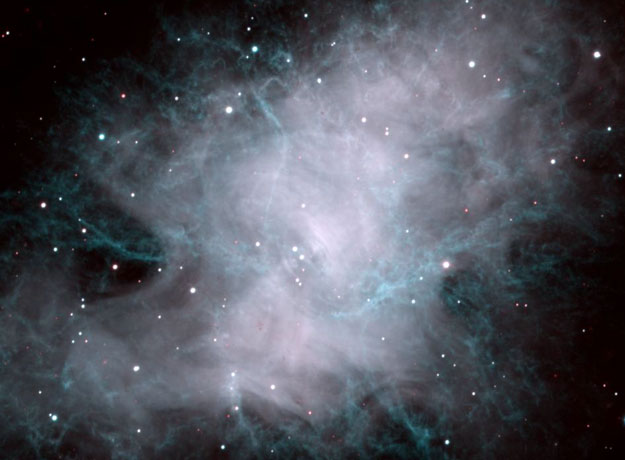
|
Explanation: The Crab Nebula is a complex shell of expanding gas. The Crab Nebula formed from a star that was seen to explode in a supernova about 1000 years ago. This two color composite image taken with the WIYN 3.5-meter telescope shows in great detail filamentary structure of the glowing hydrogen gas. Also known as M1, the center is home to a dense neutron star, a star as massive as our Sun but only the size of a city. The neutron star is a pulsar that spins thirty times a second and spits out energy that powers the nebula. The nebula is named from its likeness to a crab in an early drawing. The Crab Nebula still presents mysteries today as the total mass of the nebula and pulsar appears much less than the mass of the original pre-supernova star!
|
January February March April May June July August September October November December |
| |||||||||||||||||||||||||||||||||||||||||||||||||||||||
NASA Web Site Statements, Warnings, and Disclaimers
NASA Official: Jay Norris. Specific rights apply.
A service of: LHEA at NASA / GSFC
& Michigan Tech. U.
Based on Astronomy Picture
Of the Day
Publications with keywords: nebula - M 1 - Crab Nebula
Publications with words: nebula - M 1 - Crab Nebula
See also:
- APOD: 2024 July 23 Á The Crab Nebula from Visible to X Ray
- APOD: 2024 June 11 Á Colorful Stars and Clouds near Rho Ophiuchi
- APOD: 2024 January 23 Á Deep Nebulas: From Seagull to California
- M1: The Incredible Expanding Crab
- M1: The Crab Nebula
- APOD: 2023 June 14 Á The Shark Nebula
- APOD: 2023 March 20 Á M1: The Expanding Crab Nebula
